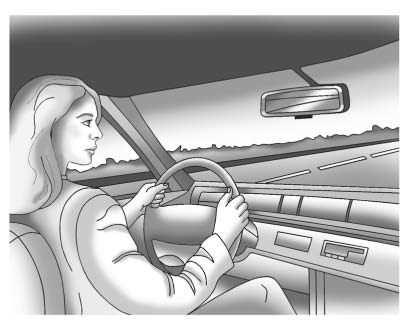Steering in Emergencies
There are times when steering can be more effective than braking.
For example, you come over a hill and find a truck stopped in your lane, or a car suddenly pulls out from nowhere, or a child darts out from between parked cars and stops right in front of you. These problems can be avoided by braking—if you can stop in time. But sometimes you cannot stop in time because there is no room. That is the time for evasive action—steering around the problem.
The vehicle can perform very well in emergencies like these. First apply the brakes. See Braking . It is better to remove as much speed as possible from a collision. Then steer around the problem, to the left or right depending on the space available.

An emergency like this requires close attention and a quick decision.
If holding the steering wheel at the recommended 9 and 3 o'clock positions, it can be turned a full 180 degrees very quickly without removing either hand. But you have to act fast, steer quickly, and just as quickly straighten the wheel once you have avoided the object.
The fact that such emergency situations are always possible is a good reason to practice defensive driving at all times and wear safety belts properly.
See also:
Traction Control System (TCS)
The traction control system limits wheel spin. The
system turns on automatically every time the vehicle is
started.
• To turn off traction control, press and release
in
front of the shift l ...
Lumbar Adjustment
Lumbar Adjustment
To adjust the lumbar support,
if available:
• Press and hold the front or rear
of the control to increase or
decrease lumbar support.
• Press and hold the top or botto ...
Canceling a Remote Start
To cancel a remote start, do one of
the following:
• Aim the RKE transmitter at the
vehicle and press and hold
until the parking lamps turn off.
• Turn on the hazard warning
flashers.
...


